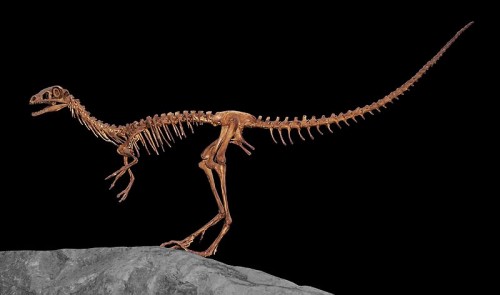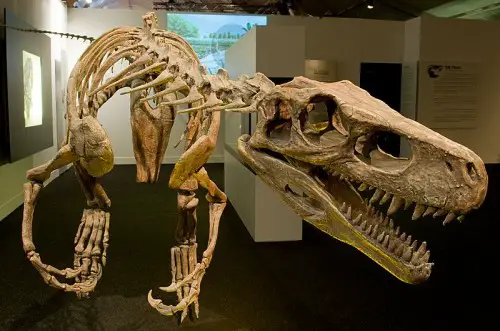Mammoth
A mammoth is any of a number of an extinct genus ofproboscidean (of which the elephant remains), often with long curved tusks and, in northern species, a covering of long hair. They lived from the Pliocene epoch from 4.8 million years ago to around 3,500 years ago. The word mammoth comes from the Russian мамонт mamont, probably in turn from the Khanty. Mammoths and their relatives the mastodons are widely considered to be an iconic example of an extinct mammal.
Most mammoths died out at the end of the last Ice Age. A definitive explanation for their mass extinction is yet to be agreed upon. However, the small mammoths of Wrangel Island became extinct only around 1700 to 1500 BC.

Mammoth
New data derived from studies done on living elephants and reported by the American Institute of Biological Sciences (BioScience, April 2006, Vol. 56 No. 4, pp. 292-298) suggests that though human hunting may not have been the primary cause toward the mammoth’s final extinction, human hunting was likely a strong contributing factor. Homo erectus is known to have consumed mammoth meat as early as 1.8 million years ago. More..
Three species of mammoths (genus Mammuthus) lived on the mainland of the United States at the end of the last Ice Age. These were the Columbian mammoth (M. columbi), Jefferson’s mammoth (M. jeffersonii), and the woolly mammoth (M. primigenius). Of these, Jefferson’s mammoth and the woolly mammoth have been identified from the midwestern U.S.
Mammoths, mastodons and modern elephants, are members of the order Proboscidea. The mammoths are closely related to the living elephants, especially to the Asiatic elephant (Elephas maximus).
As adults these late-occuring mammoths stood between about 3 and 3.7 meters (10-12 feet) at the shoulder and weighed between 5500 and 7300 kilograms (6-8 tons).
Mammoth Teeth
The teeth of mammoths are quite distinctive. They are composed of a set of compressed enamel plates that are held together with cementum. These cemented plates make a very tall, strong, and wear-resistant tooth. After a tooth erupts from the gum cavity, the mammoth uses it in grinding coarse vegetation like grass. This use causes the tooth to develop a flat top with low enamel ridges where the plates have been worn.
The tall structure of these hypsodont (shallow-rooted) teeth make them very resistant to wear. This is important because mammoths are thought to have been primarily grass-eaters. Grass is a very hard material to eat. It has small pieces of silica (a glass-like substance) in its leaves. These pieces of silica act like sandpaper grit and would wear away a less resistant tooth very quickly.
Mammoths are frequently found as fossils in the midwestern U.S. Most often isolated teeth are found. Mammoth fossils are most common in areas that were covered by savannas, grasslands, or tundra during the last Ice Age. This map shows some of the important mammoth finds in the region. More..



Very nice information and enticing article. I didn’t think the mammoth can look so scary as in the picture you showed.
You can also check out more:
Can We Bring Life Back to Mammoth?
Thanks,
-fornls
thanks now i can do my report
i like your web site but the thing is that i wish you would just put more in about the extinction of the mammoths that some people wish that you would support there theories like human hunting you need more information about it because that is what i am interested in the extinction of mammoths because it is very interesting !
now i can do my project about extinct animals
This was fully useful for me.
It made me to know about the Mammoths that it helped me to write something in my blog.
So “THANKS”
and watch some more on :~)
[ http://eclipsazoology.blogspot.com/ ]
thanks for the brilient info :)